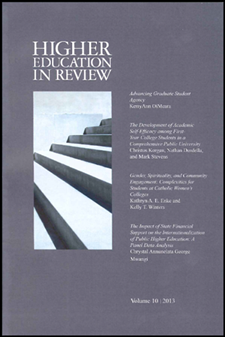By Frank Fernandez, The Pennsylvania State University “Institutions which one generation regards as only a makeshift approximation to the realization of a principle, the next generation honors as the nearest possible approximation to that principle, and the next worships as the principle itself. It takes scarcely three generations for the apotheosis. The grandson accepts his grandfather’s hesitating experiment as an integral part of the fixed constitution of nature.” - Woodrow Wilson (1887, p. 209) When we look around us, we take for granted the battles fought by previous generations. As Woodrow Wilson wrote, cautious gains become ubiquitous with time. Women’s suffrage, Social Security, the Civil Rights Act, Title IX and female sports—each of these was once a radical proposition, vehemently opposed. Why does affirmative action buck this trend? Why is it that instead of growing more sacred with time, affirmative action is repeatedly attacked (first in Bakke, then Grutter, and now Fisher—not to mention state bans such as California’s Proposition 209 and Michigan’s Proposal 2)? America is still plagued with inequality and intolerance, but the question remains, why have some efforts toward equality been more accepted than others? Historically speaking, selective admissions processes were created as a means for exclusion (see Jerome Karabel’s The Chosen: The Hidden History of Admission and Exclusion at Harvard, Yale, and Princeton). Americans’ demand for access to higher education grew faster than colleges and universities could bear, so more and more colleges formalized selective admissions procedures. This has led to what David Labaree has characterized as the Groucho Marx complex; like Marx, many prospective students “don’t want to belong to any club [university] that would accept me [them] as one of its members.” (In the recent Fisher v. University of Texas case, Abigail Noel Fisher was unsatisfied with her acceptance to Louisiana State University.) Part of the problem is that because of competitive admissions processes, some people see affirmative action as rigging a zero-sum game. Still, this doesn’t fully answer why affirmative action has not been enshrined as a hallowed American institution. We love when men like Barack Obama and Ted Cruz live out the American dream, rising from humble beginnings to attend some of the nation’s most selective universities and become leaders of society; however, we vacillate in our commitment to policies that can make real-life Horatio Alger stories more a rule than an exception. We know that values can change over time otherwise there would never be social progress. But we don’t often think about what makes some values stronger than others. Burton Clark’s writing offers a way to think through this problem. Clark argues that social values are precarious when they are not articulated in stakeholders’ goals or standards. He also finds that values are precarious when they are seen as belonging to smaller groups and are not accepted by the larger “host” population. Secure values, then, are those that are clearly defined in behavior and strongly established in the minds of many. Such values literally take care of themselves. Precarious values, on the other hand, need deliberately intentioned agents, for they must be normatively defined, or socially established, or both. (pp. 8-9) The overwhelming consensus of social science research* shows that affirmative action has social and academic benefits for majority students—the classmates of minority students. Although affirmative action has many intentional agents, I would argue that the idea that affirmative action benefits everyone has not been “strongly established in the minds of many.” Moving forward we must continue to normatively define and socially establish support for affirmative action. We must continue to find—and more importantly publicize—evidence that shows the benefits of affirmative action. Too often, evaluation metrics do not account for ethnic or socioeconomic diversity in university admissions. Diversity is not, but could easily be, included in the U.S. News and World Report’s rankings and other popular sources that are accessible to students and their parents (and valued by institutions). Special efforts should be taken in “new destination” states and areas that are becoming more ethnically diverse so that they do not adopt reactionary affirmative action bans as others have before them. It has been said that “the arc of the moral universe is long, but it bends toward justice.” There was a day when women were not allowed in the academy, but two centuries later women outnumber men in American higher education. I am optimistic that America’s colleges and universities will be diverse and dynamic learning environments, but only if we are defenders of diversity and strengthen the precarious value of affirmative action.
Frank Fernandez is a PhD Candidate in
Higher Education and Research Assistant at Penn State's Center for the
Study of Higher Education. *For summaries of social science research see: Brief for American Social Science Researchers as Amici Curiae Supporting Respondents, Fisher v. University of Texas, 570 U.S. ___(2013) (no. 11-345). Retrieved from Brief for Civil Rights Project/Proyecto Derechos Civiles as Amicus Curiae Supporting Respondents, Schuette v. Coalition to Defend Affirmative Action (no. 12-682). Retrieved from http://www.americanbar.org/content/dam/aba/publications/supreme_court_preview/briefs-v2/12-682_resp_amcu_crp-etal.authcheckdam.pdf Garces, L. M. Social science research and the courts: Informing post-Grutter v. Bollinger developments in higher education cases. Educational Policy, 27(4), 591-614. Retrieved from
References Clark, B. (2008). On Higher Education: Selected Writings: 1956-2006. Baltimore: Johns Hopkins Press. Wilson, W. (1887). The study of administration. Political science quarterly, 2(2), 197-222. |
|
HER-O >
Affirmative Action as a Precarious Valueposted Nov 8, 2013, 12:10 AM by Frank Fernandez [ updated Nov 8, 2013, 1:34 AM ] |
